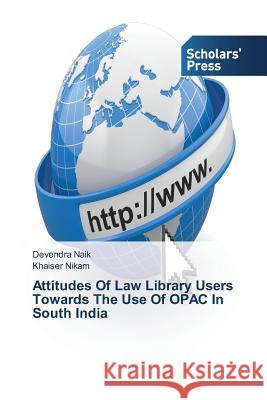Attitudes Of Law Library Users Towards The Use Of OPAC In South India » książka
Attitudes Of Law Library Users Towards The Use Of OPAC In South India
ISBN-13: 9783639669374 / Angielski / Miękka / 2014 / 324 str.
This research study examined the attitudes of the law library users towards the use of OPAC/Web OPAC and selected all the six Law University libraries in South India. The sample population was chosen by using the convenience sample method. The statistical techniques (descriptive and inferential statistics) were used in analyzing the data. All inferential statistics used the .05 level of significance and all analyses were performed using SPSS software. Majority of the law library users had favorable perception and attitudes towards the use of OPAC/Web OPAC. However, a few law library users do not utilize the OPAC/Web OPAC services and facilities. This is mainly due to lack of OPAC/Web OPAC using skill and insufficient knowledge of the OPAC/Web OPAC. No doubt these findings are helpful for librarians, information scientists and OPAC/Web OPAC designers. Librarians must try to implement OPAC/Web OPAC 2.0 concepts; it includes spell-Check, commenting, rating, tagging, book suggestion based on loans, Application Program Interface, selected dissemination of information and book suggestion.
This research study examined the attitudes of the law library users towards the use of OPAC/Web OPAC and selected all the six Law University libraries in South India. The sample population was chosen by using the convenience sample method. The statistical techniques (descriptive and inferential statistics) were used in analyzing the data. All inferential statistics used the .05 level of significance and all analyses were performed using SPSS software. Majority of the law library users had favorable perception and attitudes towards the use of OPAC/Web OPAC. However, a few law library users do not utilize the OPAC/Web OPAC services and facilities. This is mainly due to lack of OPAC/Web OPAC using skill and insufficient knowledge of the OPAC/Web OPAC. No doubt these findings are helpful for librarians, information scientists and OPAC/Web OPAC designers. Librarians must try to implement OPAC/Web OPAC 2.0 concepts; it includes spell-Check, commenting, rating, tagging, book suggestion based on loans, Application Program Interface, selected dissemination of information and book suggestion.











